
Understanding of the artistic merits of a museum’s original, the interest in man-made beauty, the incorporation of the values of the past into contemporary culture, is the basis for the formation of moralityand the wold-view. Without such basis the full-fledged development of both individual and society as a whole would be impossible.
/ D.S. Likhachev
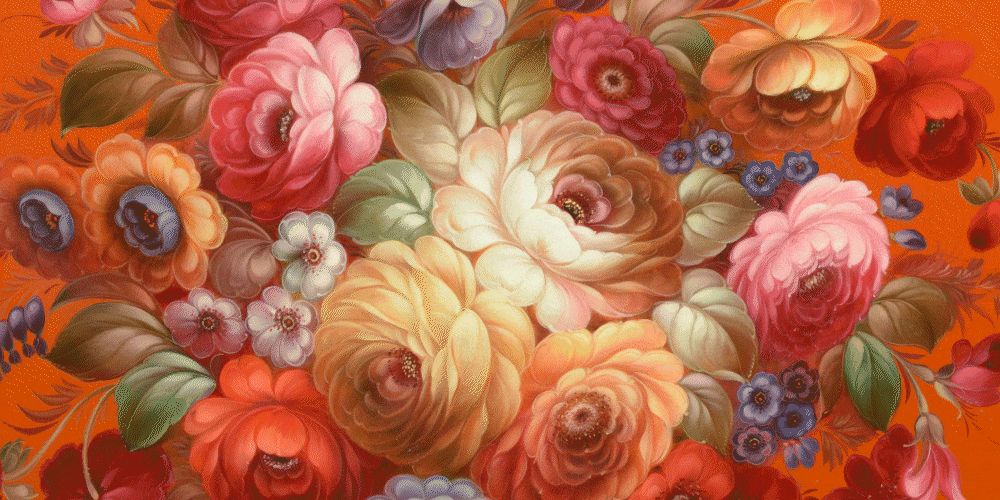
Flowers are "eternal subjects", enjoying love throughout the existence of decorative art. It is the oldest symbol of joy and merriment, of absolute order. The flower of life is a symbol of activation of vital energy and protection, a reflection of the incomprehensible perfection of the changing nature, a sign of beauty that accompanies a person throughout life. It is no coincidence that even today we try to celebrate the joyous and solemn events of our lives with flowers. The idea of beauty and harmony in the world, expressed through a system of signs, a system of artistic language, is one of the major achievements of civilization.
The sum of knowledge and ideas, setting moral guidelines and encoded in symbols, fairy tales, proverbs, songs, reached us also through folk pictorial culture, in which floral motifs are everywhere: from house decorations to spinning wheels, festive dishes and printing boards, scarves, carpets, toys, etc.
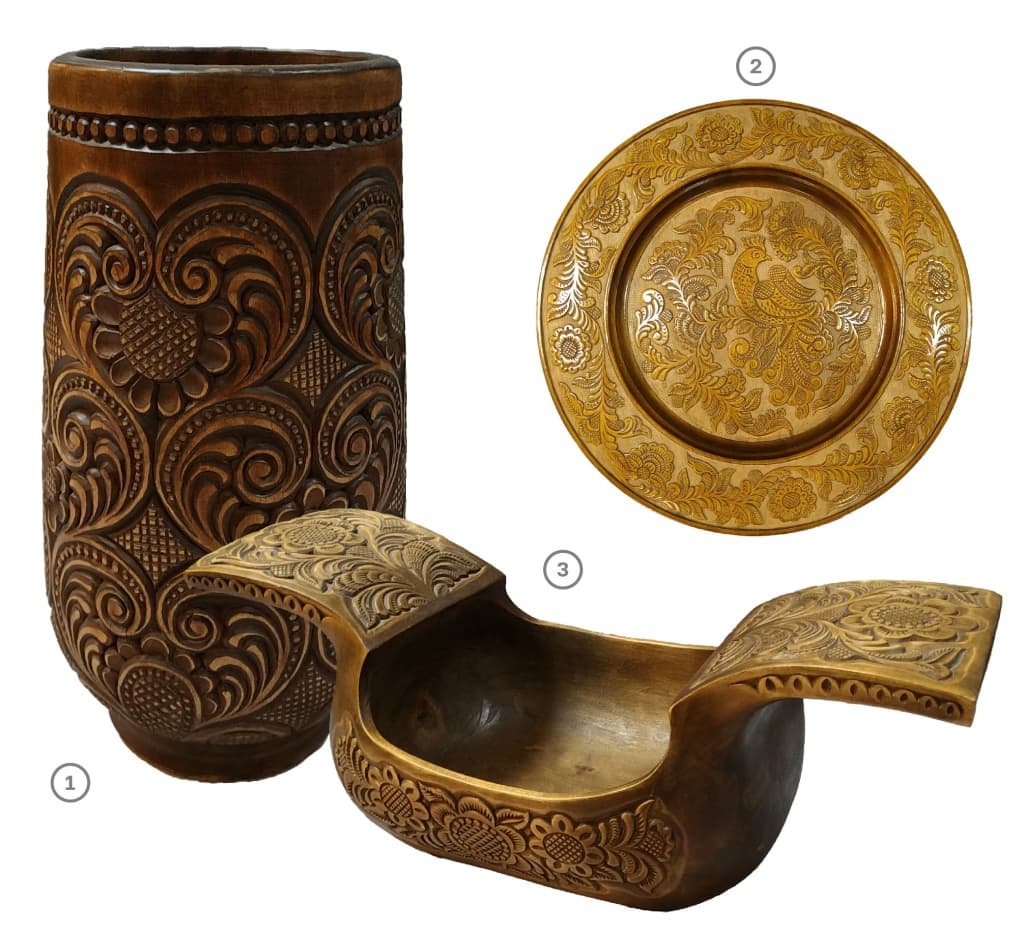
1. Vase. Moscow region, Khotkovo. 1981. Wood, turning, carving. 2. Dish with a carved image of a bird in flowers. Lidia Alexandrovna Vornoskova. The Moscow Region, Sergiev Posadsky District, Khotkovo. 1980. Wood, varnishing, carving. 3. Ladle. Tamara Vladimirovna Alkhimovich. Khotkovo. 1980. Wood, chiseling, carving, staining.
The beauty of these objects of everyday use is linked to the people's understanding of life itself as a manifestation of the beautiful, with an awareness of the importance of each item, with the belief that a well-made item will bring prosperity to the home. The image of a flower on a spinning wheel has a protective character, because according to folk beliefs flowers were endowed with medicinal properties: daisies promised health, violets - wisdom, and roses - love and peace. Flowers, as messengers of good wishes and hopes, were necessary for every person.
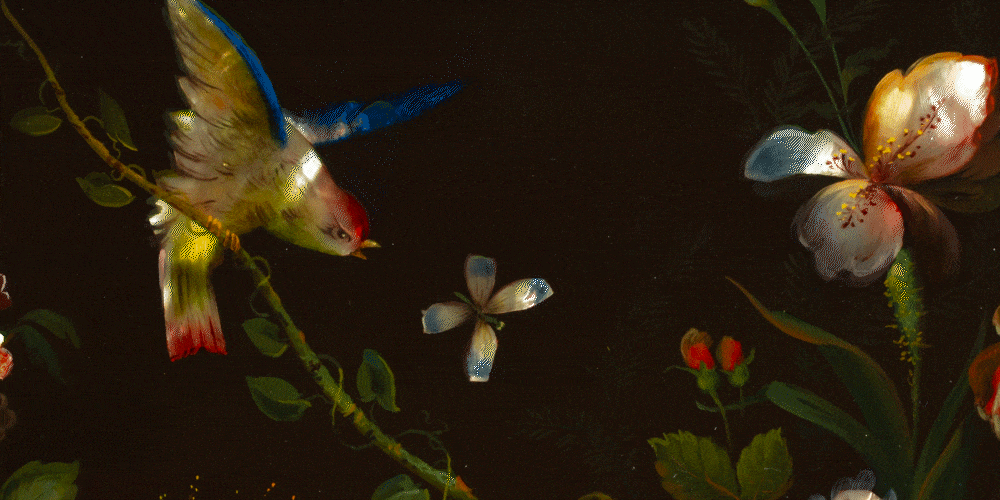
These notions, embodied in the forms of objects, in ornaments, colors of decoration, transferred these things into another symbolic dimension, filling people's lives with deep meaning.
For decades the masters of folk arts and crafts, have been giving us their art. These products of high skill, hard work of craftsmen from different regions of Russia - a living branch of Russian culture. What trades Russia is not rich in! They emerged from the local crafts and each has its own distinctive style, technique and unique products.
Since the second half of the 19th century the flowers and grass growing in the area: daisies, bluebells, curly branches of sedge have become the prevailing motif of artistic decoration in various kinds of arts and crafts. And the most common flowers, most often present in the subjects of the decor, are the noble roses and tulips.
Just like in poetry, in art the image of blooming plants is endowed with a special meaning. Images of flowers and herbs represent the beneficent power of nature, a "holiday of life", as in the famous paintings of Boris Kustodiev with his stately merchant ladies in shawls with floral patterns. Floral motifs are used in painting interiors and furniture, bouquets of flowers become the decoration of porcelain, Zhostovo trays, carpets and shawls.
Artists of Gorodets and Khokhloma, the famous crafts of the Nizhny Novgorod region, also loved to paint flowers. Gorodets masters adorn painted caskets, dishes, furniture and toys. Incredible variety of floral motifs of Gorodets painting: meadowsweet, daisies, the famous Gorodets rose - lush carpet, "sprouted" with flowers, as the embodiment of the dream of a paradise garden on earth. The figurative painting was never without floral motifs, the heroes were always surrounded by lush plant shoots and stylized flowers. Gorodets masters love flowers, and the artist decorates the painting field with garlands of floral bouquets. Decorative motifs are emphasized by decorative colors and techniques. The favorite background is bright green or saturated red, blue or yellow, deep blue, sometimes black, which especially richly represents the polychrome of Gorodets coloring.
The painting is done with a brush, without pre-drawing, with a free and rich stroke.
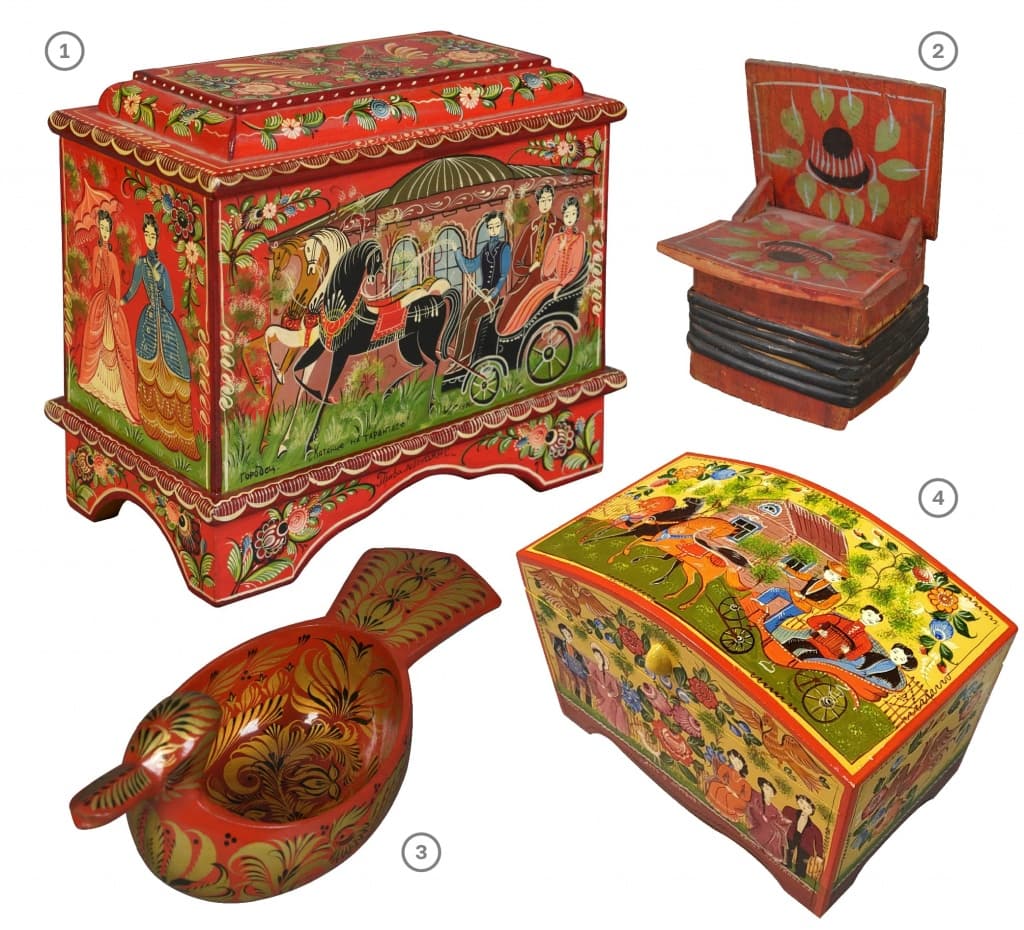
1. A little chest "Riding on a tarantass". Natalia Semyonovna Privalovskaya. Russia, Nizhny Novgorod Region, Gorodets. 1994. Plywood, painting, varnish. 2. A salt shaker. The Nizhny Novgorod Province, the District of Gorodets. Late 19th - early 20th century. Wood, carpentry, painting. 3. Ladle. Stepan Veselov. The Gorky Region, Koverninsky District, the village of Mokushino. 1977. Wood, carving, chiseling, painting. 4. Treasure chest "Summer in the Country. Lydia Kubatkina. Nizhny Novgorod Region, Gorodets. 1996. Wood, carving, painting, varnish.
Golden Khokhloma became one of the most famous types of wood painting in Russia. Its ornaments, depicting a smoothly twined branch, in whose curves flowers are blossoming, ripe fruit or bunches of berries, soulfully reveal the poetry of Russian nature. In these patterns the artist's real life observations are transformed into fantastic symbols, such as the image of an abundant garden, where the motifs of flowers carry a special semantic meaning, expressing the wish for a happy and prosperous life to the one who becomes the owner of the painted vessel. The content of the painting corresponds to its festive and solemn coloring, based on a combination of sparkling gold, scarlet vermilion and black lacquer background. This combination symbolized the triumph of vital forces and goodness, and the brilliance of gold was associated with sunlight.
Emerging as a domestic production, Kursk carpet weaving took shape as a trade at the end of the XVII - beginning of the XVIII centuries, and by the end of the century there were manufactories that by the second half of the XIX century spread throughout the Kursk province. At the same time stylistic features of a lint-free rug were formed: a bouquet of garden and wild flowers in the middle framed by lush foliage against the characteristic dark background which emphasized the bright colors of the rug, creating a festive mood. The flowers and leaves in the form of a garland going along the edges of the carpet accomplished the main composition. The floral ornament was interpreted in a realistic manner. Kursk hand-woven carpets from the museum collection date back to the 1950s and 1970s, when artists, experimenting with the color of the background, created traditional compositions of flowers on blue, green and red backgrounds. There was a bouquet of garden and field flowers in the middle framed by lush foliage.
The museum's collection of Gzhel ceramics is one of the most significant. Gzhel art is a strikingly original phenomenon of Russian culture. The world-famous craft received its second birth in the second half of the 20th century, when the whiteness of porcelain and the blue of cobalt became central to its palette. Plant and floral motifs are the basis of Gzhel's expressive language. Its main symbol - a fantasy flower "Gzhel Rose" takes its rightful place in the bouquet of Russian folk crafts.
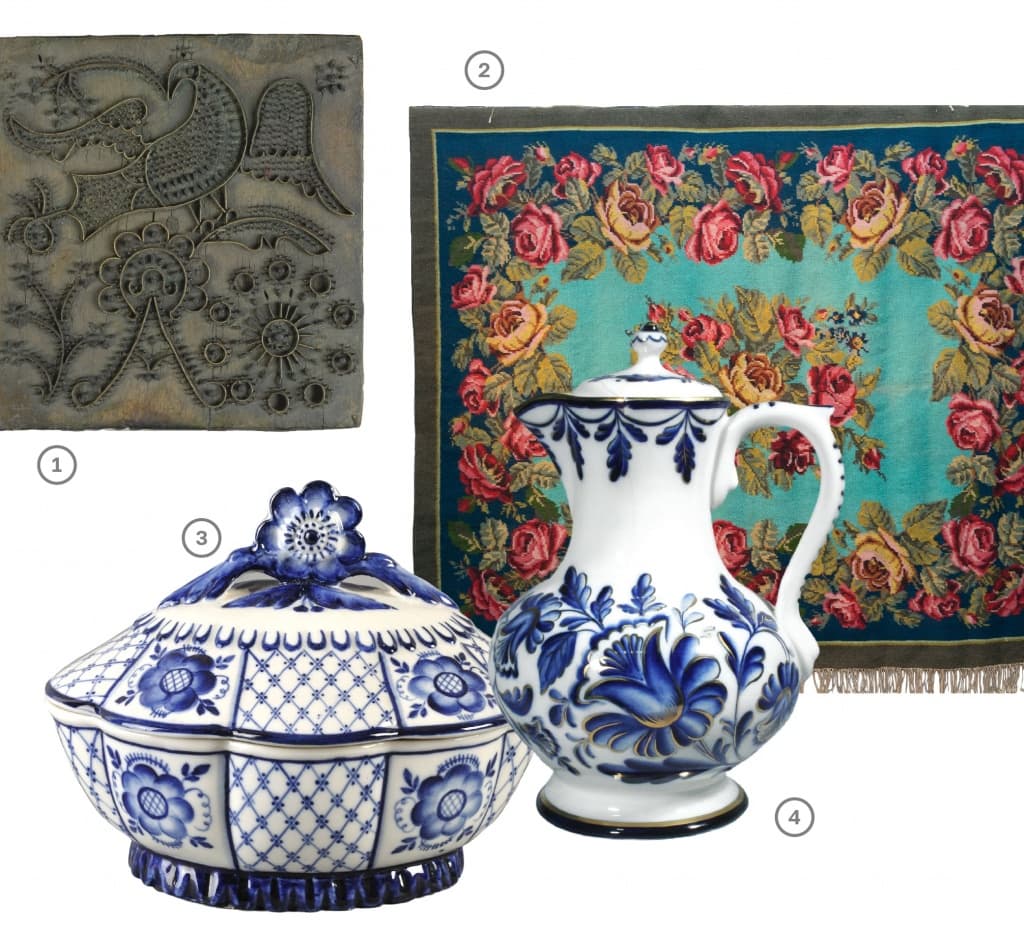
1. Printing Board. Russia. XIX - the beginning of XX century. Wood, metal, carving, set. 2. Lint-free "Roses" rug. Klavdia Petrovna Rodionenko. RSFSR, Kursk region, Sudzha. 1953. Yarns of wool, cotton thread, smooth double-sided weaving. 3. Box. Tatiana Sergeyevna Dunashova. Moscow Region, Ramensky District, Turygino Village. 1978. Porcelain, cobalt underglaze painting. 4. Jug with a lid and flower-painted decoration. Tatiana Sergeyevna Dunashova (the author of paintings), Natalia Ivanovna Bessarabova (the author of the mold). The village of Turygino, Ramensky District, Moscow Region. 1957. Porcelain, underglaze painting in cobalt, gilding.
Products from the famous Pavlovo Posad factory near Moscow, wool shawls with printed patterns, met all the requirements and demands of fashionable women of the second half of the XIXth century. At that time, shawls were a necessary addition to women's clothing. Talented draftsmen worked at the factory. They created patterns with three-dimensional garden and field flowers: roses, peonies, daisies, forget-me-nots, bright and rich colors and shades, which made the Pavloposadskiy shawls famous all over the world. The Pavlovo shawl has long been one of the symbols of Russian traditional culture. It is no coincidence that even today many women gladly use Pavlovo shawls as a spectacular addition to their clothes.
The variations of floral and ornamental compositions of shawls and scarves are endless. Each shawl pattern is unique and original, each shawl as a pictorial work is sure to have its own name. Nowadays artists of "Pavloposadskiy shawl manufacture" revere their traditions, developing and supplementing them with new ideas, in which flower compositions invariably remain basic in their creative search.
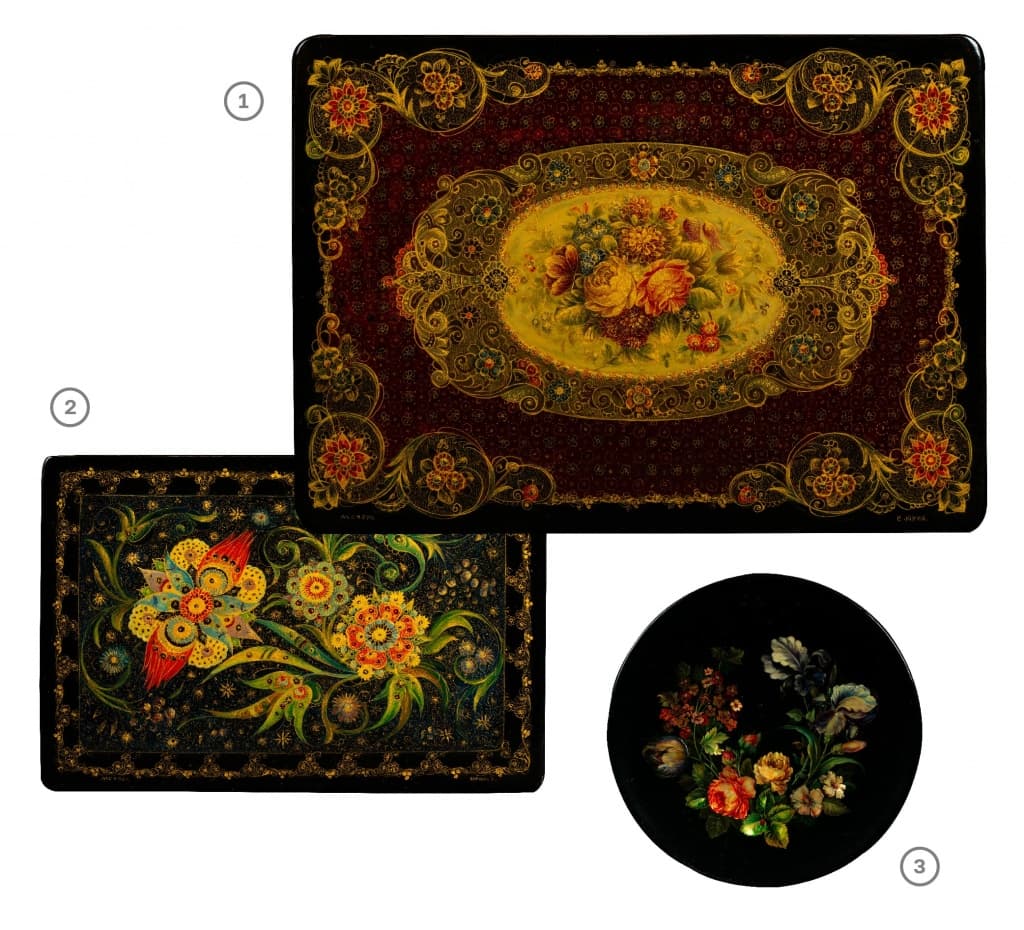
1. Box "Flowers". Evgeny Vasilievich Yurin. Vladimir region, Vyazniki area, Mstera settlement. 1950. Papier-mache, varnish, tempera, gold creations, miniature painting. 2. A Casket "Fairy Tale". Evgeny Vasilyevich Yurin. Vladimir region, Vyazniki district, Mstera settlement. 1980. Papier-mache, varnish, tempera, gold creations, miniature painting. 3. The plate "Flowers". Sergey Nikiforovich Tardasov. Moscow Region, Fedoskino village. The village of Fedoskino. 1952. Papier-mache, lacquer, oil, mother-of-pearl, metal powder, miniature painting
Miniature lacquer painting is a unique artistic phenomenon of the Russian culture, comparable with "Russian porcelain" and "Russian opera". The museum has gathered one of the best collections of lacquer miniatures in Russia: Fedoskino in the Moscow region, Palekh and Kholuya in the Ivanovo region, Mstyory in the Vladimir region. Among the variety of subjects of lacquer painting are often floral compositions, finely painted ornate bouquets in gold ornamentation. The founder of the ornamental art of Mstyorsk miniature is the former icon painter Evgeny Vasilyevich Yurin. He managed to create his own original style of painting - exquisite, masterly compositions of stylized flowers, leaves and herbs painted in gold.
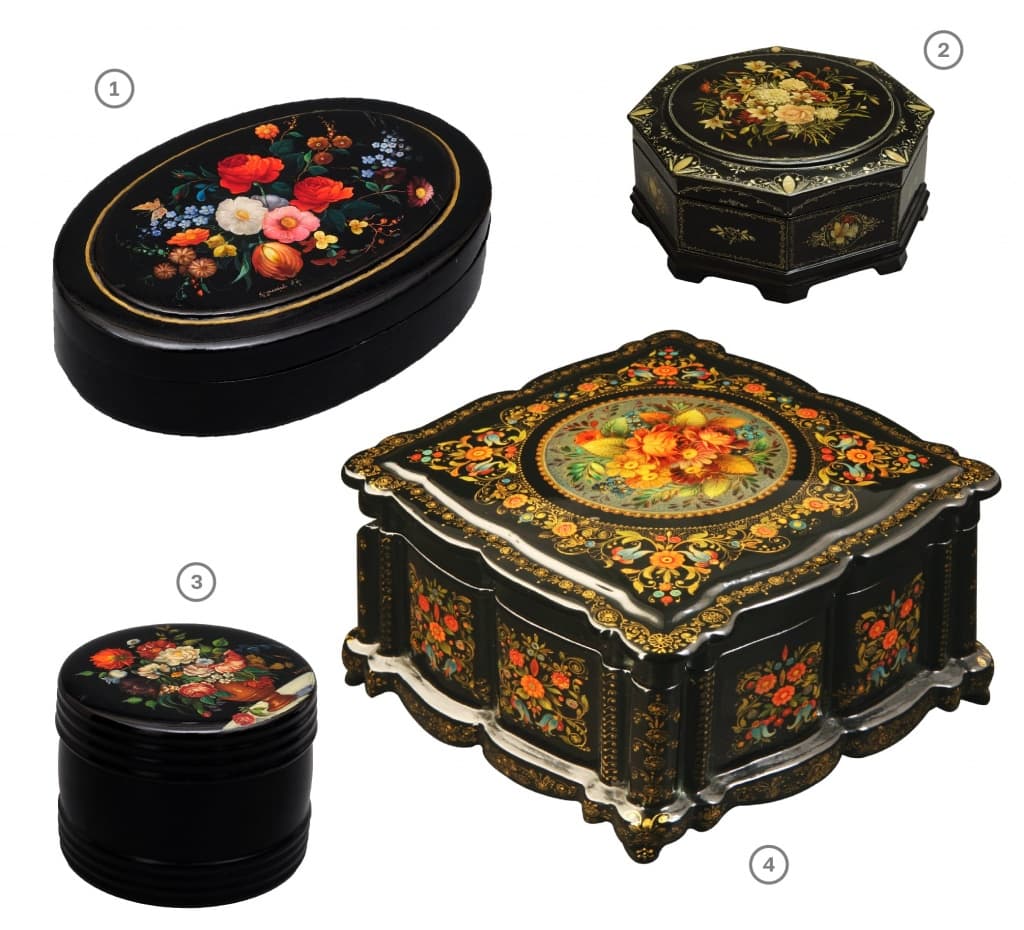
1. A trunk "Flowers". Alexei Alexeyevich Kruglikov. Moscow region, the village of Fedoskino. 1935. Papier-mache, varnish, oil, staining. 2. The Chest "Flowers and Ornament. B.S.Yeremin. Moscow Region, Fedoskino village. 1952. Papier-mache, varnish, oil, mother-of-pearl, powdered metal, miniature painting. 3. Barrel "Bouquet of flowers". Ivan Semenovich Semenov. Moscow Region, Fedoskino village. Early 1930s. Papier-mache, varnish, oil, miniature painting. 4. The Chest "Patterns". Rita Kultysheva. Vladimir region, Vyazniki District, Mstera village. 1990. Papier-mache, varnish, tempera, gold, miniature painting
The art of Zhostov in the Moscow region, a special kind of decorative painting on metal, also belongs to the family of Russian lacquer. Bouquet of flowers, on the deep black background of the metal tray is a living symbol of the famous craft. The traditional black background of the Zhostovo tray is the basis on which the bright coloristic representation unfolds, the color and emotional and imaginative structure of the work is formed. The rich colors of the painting dazzle on the shiny lacquer surface of the tray, creating a wonderfully festive mood and awakening bright positive emotions. Flower bouquets on the big field of the tray look nice and joyful, that's why Zhostovo trays quickly turned from utilitarian, everyday things into real decorative panels, true works of art.
The secret of Zhostovo painting is its improvisational character - the artist does not paint directly from nature, from living flowers, does not use a preliminary drawing, does not need a botanical atlas. Zhostov's art is a transformation of what has been seen, an interpretation of natural impressions multiplied by the unfading power of imagination and creative fantasy of the artist. Zhostovo bouquet is a poetic link between the world of nature and the world of art, where the faces of reality appear in different ways and present inimitable images of the beautiful.
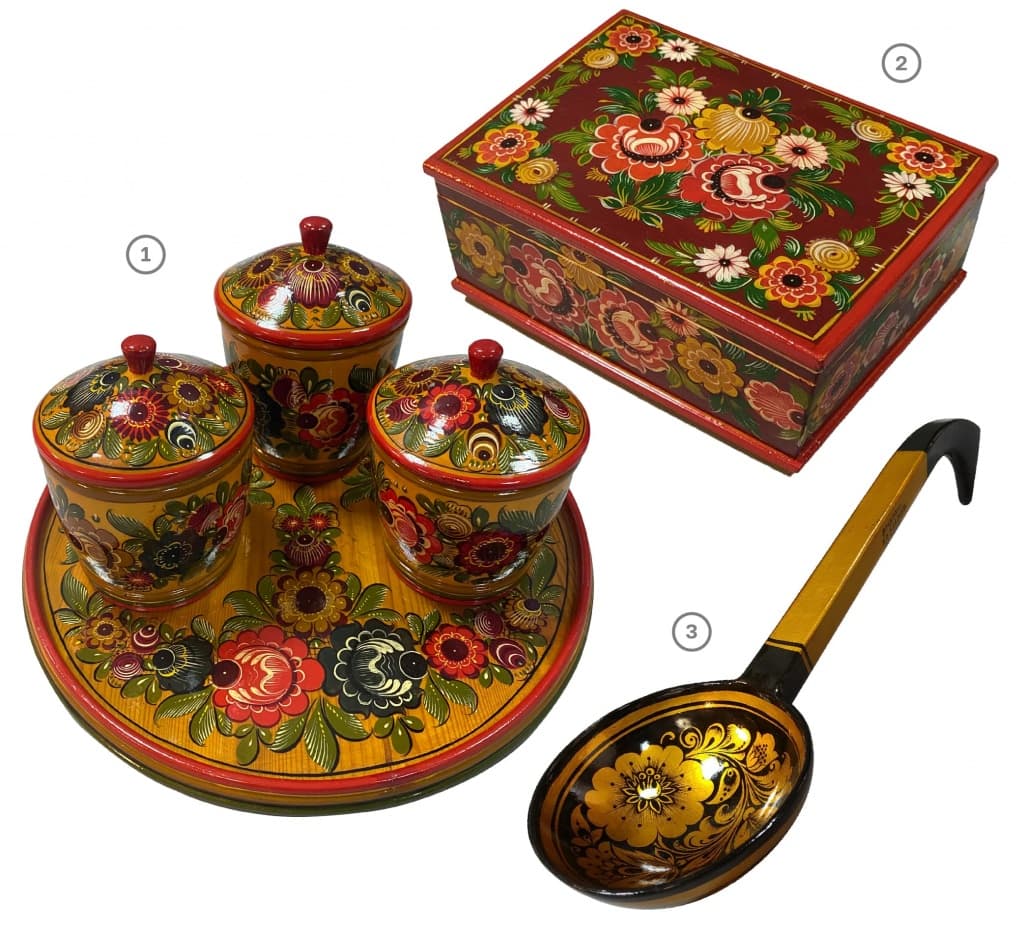
1. The set "Tea". Alexandra Sokolova. 1980. Wood, sharpening, painting. 2. The Box for Thread. Faina Nikiforovna Kasatova. The Gorky Region, Gorodets. 1981. Wood, lathe work, painting. 3. Ladle. Yekaterina Dospalova, Tatiana Baranova. The Gorky Region, Semyonov. 1989. Wood, carving, painting, varnish.



